Retrospective of Starship Troopers: The Boardgame
Join the Army and see…the Universe! – Tagline for the novel Starship Troopers
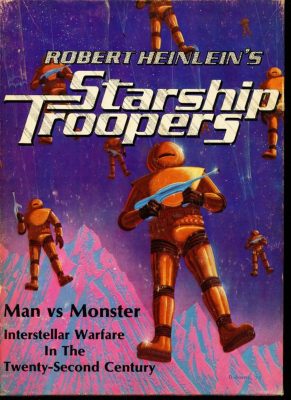
by Patrick S. Baker
The classic military science fiction novel, Starship Troopers by Robert A. Heinlein was released in December 1959. The book became one of Heinlein’s best-selling books and is likely his most well-known work. Star Troopers won the Hugo Award for Best Novel in 1960. The descriptions of combat in the novel focus on the Mobile Infantry (M.I.).
Dropped from orbit in individual reentry vehicles, the highly trained troopers land on a hostile planet to battle the enemy, in the novel either the hivemind “Pseudo-Arachnids” or “Bugs”, or the humanoid “Skinnies”.
The M.I. wear powered armor suits, which are controlled by the wearer’s movements, but with much-augmented strength, for example, a M.I. soldier can jump for hundred of meters in a single bound or can rip holes in buildings with nothing but his suit. Further, the M.I. are armed with flame throwers, rocket launchers, and even “mini-nukes”.
The combat in the novel made a nifty background for a hex-and-counter wargame released in 1976 by Avalon Hill. The game was designed by Randall Reed, of Tobruk fame, and approved by Robert A. Heinlein. Heinlein also provided a description of the game and his signature, which are printed on the back of the box.
 In the game, either of the two players may either play the Humans represented by the Terran Federation, the Skinnies, and/or the Bugs. The game is designed with “Programmed Instruction” system of scenarios in that the first, and least complex, scenario has the simplest rules, then each subsequent scenario adds new rules and another layer of complexity as players advance. through the game.
In the game, either of the two players may either play the Humans represented by the Terran Federation, the Skinnies, and/or the Bugs. The game is designed with “Programmed Instruction” system of scenarios in that the first, and least complex, scenario has the simplest rules, then each subsequent scenario adds new rules and another layer of complexity as players advance. through the game.
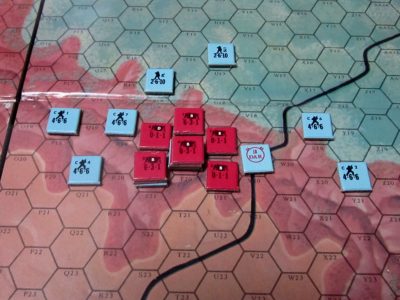 Scenario 1: “Feint against the humanoids”: One squad of M.I. hits a Skinny colony (taken from the first chapter of the novel).
Scenario 1: “Feint against the humanoids”: One squad of M.I. hits a Skinny colony (taken from the first chapter of the novel).
Scenario 2: “Operation Bughouse” A complete M.I. platoon takes on a Bug hive.
Scenario 3: “Invasion of Skinny-5” An M.I. platoon attacks a Skinny industrial center.
Scenario: 4 “Revolt!” The Skinnies and M.I. team up against the Bugs.
Scenario 5a: “Sheol: Operation Corkscrew” The Human Combat Engineers (C.E.) operate with the M.I.
 Scenario 5b: “Sheol: Retreat and Evacuation” The M.I. and C.E. rescue some wounded Humans.
Scenario 5b: “Sheol: Retreat and Evacuation” The M.I. and C.E. rescue some wounded Humans.
Scenario 6: “Operation Royalty”: The M.I. and C.E. combine to attack two Bug underground complexes and try and capture a Brain Bug (taken from Chapter 13 of the book).
Scenario 7: “Klendathu”: Two M.I. platoons and support battle two Bug complexes to free human prisoners of war.
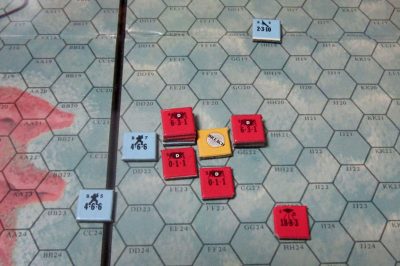 The Arachnid Player uses a small paper copy of the large game map called an Alien Control Pad sheet to record the position of the Bug’s subterranean Hive complex and the tunnels. The hidden tunnels are used to move the Arachnoid’s units until they surface. and attack through a breach. In later scenarios, the M.I. can be equipped with sensors to help detect the tunnels and the Combat Engineers can also breach the tunnels and allow the M.I. to enter and battle the Bugs in the tunnels. The game can be somewhat “bookkeeping” intense as the players must track which soldier has the heavy weapons and sensors, or where their units are underground.
The Arachnid Player uses a small paper copy of the large game map called an Alien Control Pad sheet to record the position of the Bug’s subterranean Hive complex and the tunnels. The hidden tunnels are used to move the Arachnoid’s units until they surface. and attack through a breach. In later scenarios, the M.I. can be equipped with sensors to help detect the tunnels and the Combat Engineers can also breach the tunnels and allow the M.I. to enter and battle the Bugs in the tunnels. The game can be somewhat “bookkeeping” intense as the players must track which soldier has the heavy weapons and sensors, or where their units are underground.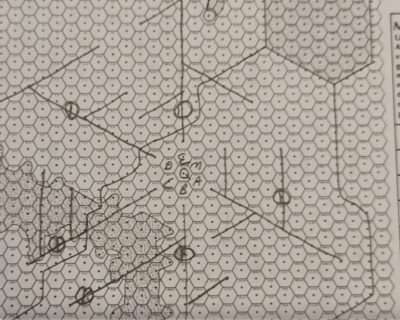
Two editions of The Space Gamer Magazine gave the game props for “faithfully recreates the heroic battles of the Terran Mobile Infantry as described in the classic…novel” and recommended the readers purchase as soon as possible. Another review said Starship Troopers’ “mechanics are clean and well-conceived” and the game “is accurate to the book, yet eminently playable” and “…a fine tactical science. fiction board game”
 In 1977, White Dwarf gave the game a 9 out of 10 and called it “…probably the best SF game currently on the market.”
In 1977, White Dwarf gave the game a 9 out of 10 and called it “…probably the best SF game currently on the market.”
Starship Troopers was nominated for the Charles S. Roberts Best Tactical game of 1976.
But the reviews were not universally excellent. The Comprehensive Guide to Board Wargaming of 1977 said the gameplay could be “… a bit bewildered at times!” While Ares Magazine gave the game a 5 out of 9 saying the game was a “Panzer Blitz derivative” and while “the game will prove interesting for the first few times” soon “the simulation value of the game will be exhausted”.
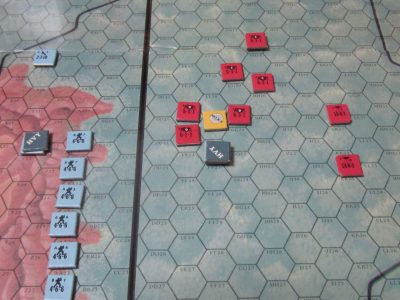 While the game is very faithful to the classic book, and the game can be interesting, it is not a classic.
While the game is very faithful to the classic book, and the game can be interesting, it is not a classic.
Photos provided by Hexsides and Hand Grenades game blog.
Sources:
Heinlein, Robert A. Starship Troopers. (New York City: Ace Books, 1959/1987)
White Dwarf. June–July 1977
“Starship Troopers”. Boardgamegeek.com
Starship Troopers Board Game Rules
Comprehensive Guide to Board Wargaming, The. (London: Sphere Books. 1977.)
The Space Gamer. August–September 1976 and October–November 1976
Ares Magazine. March 1980

I just picked up the novel and started reading it yesterday. I do have a copy of the game as well. I just might take a gander 🙂
The warfare parts in the game were the “candy” that allowed teenage boys to consider the “duty,” “privileges,” “responsibility” passages.
Hard to do solitaire, though. Played as a teenager.
We owned this game back in the day (and maybe still do; haven’t played it for a long while). Hubby didn’t remember Heinlein’s signature being on the box back; we’ll have to take a look at our copy to confirm that (assuming we haven’t sold it on eBay). The game was a LOT more faithful to the book than the movie version was!
https://nodicenoglory.com/wp-content/uploads/2022/07/IMG_20170319_103054.jpg